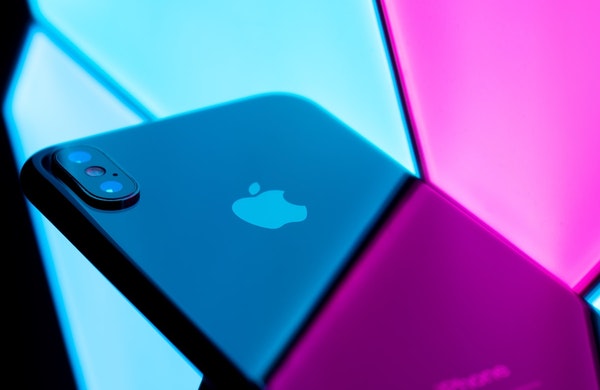In the world of retail, you are only as good as your last product. Your company may have developed the next iPod, and experienced an explosion in sales.
You rode the wave, and enjoyed the success while you reaped the benefits of a dominated market. But eventually, new products aren’t new anymore, and revolutionary technology becomes yesterday’s news.
It can be very difficult for a retailer to keep up with an ever-changing market. And quite frankly, many retailers simply cannot. You may have the next big thing. But what about the thing after that?
 Understanding, and effectively managing a product’s lifecycle allows retailers to maximize the earnings potential of that product. In this article, we will examine product lifecycle management, and discuss how it can benefit your retail business.
Understanding, and effectively managing a product’s lifecycle allows retailers to maximize the earnings potential of that product. In this article, we will examine product lifecycle management, and discuss how it can benefit your retail business.
Introduction to Product Lifecycle Management
 Product lifecycle management, or PLM, is the way goods or products are handled as they progress through the different stages of their lifespan.
Product lifecycle management, or PLM, is the way goods or products are handled as they progress through the different stages of their lifespan.
There are six stages of the product lifecycle:
-
Development– When the product is initially conceived and designed. This process can last weeks, months, or even years in some cases. The development stage is critical to the success of a product, and should not be rushed.
-
Introduction– When the product is made available on the marketplace. Financial resources should be budgeted in the introduction stage for additional marketing and promotion designed to support the product’s launch.
-
Growth– Sales of the product increase as demand for the product grows. A solid marketing campaign and strong word of mouth are essential elements of a product’s growth.
-
 Maturity– When sales of the product meet original projections. A product has “come into its own” once it has captured the desired percentage of market share, and growth has slowed down.
Maturity– When sales of the product meet original projections. A product has “come into its own” once it has captured the desired percentage of market share, and growth has slowed down. -
Stability– When sales of the product level out. Growth has slowed down due to market saturation, but the product still sells at a consistent and reliable pace.
-
Decline– When sales of the product begin to diminish due to market saturation, product fatigue, or advancing technology. Once a product has reached this stage, it has reached the end of its lifecycle.
 Understanding the lifecycle of a product helps businesses negotiate its current value in the marketplace. Sales, marketing, and promotions are all impacted by the present stage of the product.
Understanding the lifecycle of a product helps businesses negotiate its current value in the marketplace. Sales, marketing, and promotions are all impacted by the present stage of the product.
Making use of the product lifecycle framework affords businesses the opportunity to better plan for the allocation of resources necessary to support an existing product, and determine the appropriate time to begin the development of new products.
How to Implement PLM Now
 Making use of PLM software is the fastest and easiest way to implement a product lifecycle management system into your retail business.
Making use of PLM software is the fastest and easiest way to implement a product lifecycle management system into your retail business.
PLM software is designed specifically for this reason, and can effectively manage all six stages of the product lifecycle. If you are curious about how to find a product lifecycle management software company, performing a quick internet search will immediately present you with many quality options.
Utilizing product lifecycle management software can reduce business-related expenses in many ways, such as:
-
Payroll Expense– Using PLM software requires fewer employees to manage the lifecycle stages manually.
-
 Marketing Expense– More accurately predicting sales trends will allow you to allocate marketing funds much more wisely.
Marketing Expense– More accurately predicting sales trends will allow you to allocate marketing funds much more wisely. -
Inventory Expense– Knowing the current stage of a product’s lifecycle will allow for better distribution of inventory to various retail locations.
-
Promotional Expense– More effective and accurate product lifecycle management will allow for product pricing that is in line with prior, current, and future demand for that product.
-
Development Expense– Accurate prediction of a product’s decline helps a retail business prepare for the development and introduction of new products.
Don’t Beat a Dead Horse
The downfall of many retail companies stems from their failure to properly manage the lifecycle of the products which they sell. Regardless of how popular a product currently is, ultimately the bubble will always burst. There are many reasons why the interest in a product will begin to decrease.
These reasons range from market saturation, to an abundance of competing products. If you are a “one-trick pony,” what will you do once all of your customers have seen the trick?
 Again, there is no better example of this than the Apple iPod. Upon its release, the iPod revolutionized the consumer electronics industry, and rendered the majority of its competitors obsolete.
Again, there is no better example of this than the Apple iPod. Upon its release, the iPod revolutionized the consumer electronics industry, and rendered the majority of its competitors obsolete.
Through effective product lifecycle management, the iPod continually adjusted and redefined itself to stay ahead of market trends. Through this, it has remained “the next big thing.”
…………………………………………………..

